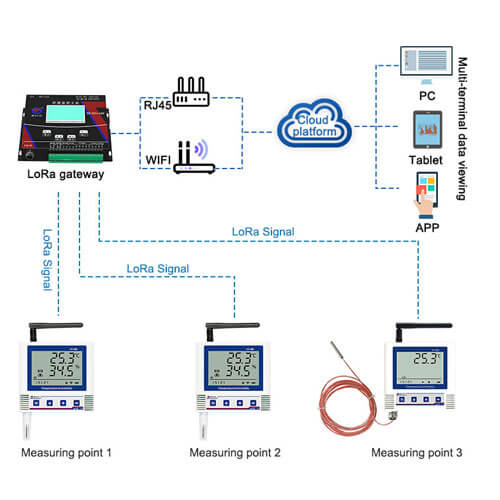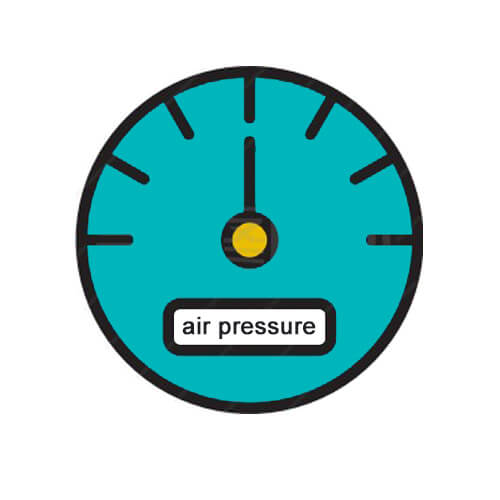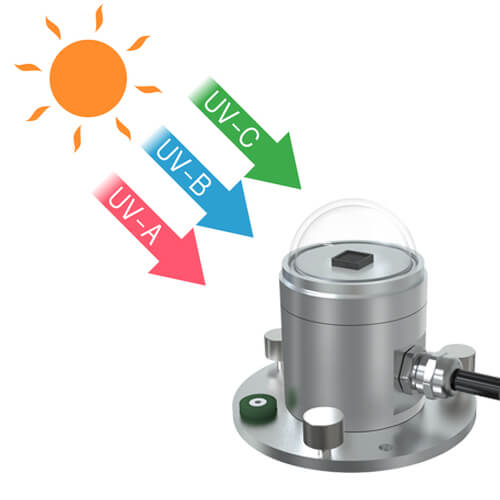Application of temperature and humidity sensors in agriculture
The application of temperature and humidity sensors in agriculture is mainly reflected in the following aspects:
Monitoring the temperature and humidity of farmland
The temperature and humidity sensors can monitor the temperature and humidity of farmland in real time, providing farmers with valuable decision-making basis. By installing temperature and humidity sensors in the soil at different depths, the agricultural intelligent monitoring system can obtain soil temperature and humidity data in real time. These data will provide important references for farmers, helping them understand the temperature and humidity conditions of farmland, reasonably adjust irrigation and fertilization, and optimize the growth environment of crops to the greatest extent.
Intelligently adjust the temperature and humidity of farmland
Based on the data obtained by the temperature and humidity sensors, the agricultural intelligent monitoring system can intelligently adjust the temperature and humidity of farmland. For example, when the temperature of farmland is too high, the system can automatically start the sprinkler equipment to cool the farmland; when the humidity of farmland is too low, the system can automatically start the irrigation equipment to add water to the farmland. Through the temperature and humidity adjustment function, the agricultural intelligent monitoring system can provide farmers with personalized farmland management services, helping them better cope with climate change and weather fluctuations.
Optimize the growth process of crops
The agricultural intelligent monitoring system can optimize the growth process of crops based on the data obtained by the temperature and humidity sensors. The system can record the growth of crops under different temperature and humidity conditions, and analyze and predict them through intelligent algorithms. Based on the prediction results, the system can provide farmers with more accurate planting suggestions, helping them optimize planting strategies and improve crop yields and quality.
Provide data support to help farmers make decisions and optimize management
The application of temperature and humidity sensors in agricultural production has multiple advantages. In addition, temperature and humidity sensors can also provide data support to help farmers make decisions and optimize management, and improve agricultural production efficiency and quality.
Realize intelligent management
Temperature and humidity sensors transmit data to intelligent control systems by continuously monitoring the temperature and humidity of the soil. These systems can automatically adjust irrigation systems, ventilation equipment, etc. based on sensor data to maintain the best growth environment. In addition, sensors can also be integrated with other agricultural intelligent devices to achieve comprehensive intelligent management of farmland and improve agricultural production efficiency and quality.
In summary, the application of temperature and humidity sensors in agriculture has greatly improved the efficiency and quality of agricultural production and promoted the modernization of agriculture.
https://www.renkeer.com/best-t....emperature-and-humid
Atmospheric pressure sensor is a device used to measure atmospheric pressure, which plays an important role in environmental monitoring. Atmospheric pressure is an important parameter in meteorology and climate change research, and it is also widely used in environmental protection, energy utilization and human health. The following are the application areas of atmospheric pressure sensors:
Meteorological monitoring: Atmospheric pressure sensors are an important part of meteorological monitoring. By continuously monitoring atmospheric pressure, real-time meteorological data can be obtained to provide accurate basis for weather forecasts. These data can help meteorologists predict weather changes, analyze climate patterns, and assess the risks of natural disasters.
Energy utilization: In terms of energy utilization, atmospheric pressure sensors can help monitor the operating status of wind power generation equipment. By monitoring the changes in wind speed and atmospheric pressure, the power output of wind power generation equipment can be calculated, providing data support for energy scheduling and optimization. At the same time, in the field of solar power generation, atmospheric pressure sensors can also help predict changes in the angle of incidence of sunlight and improve the utilization rate of solar panels.
Environmental protection: In terms of environmental protection, atmospheric pressure sensors can be used to monitor air quality, pollutant diffusion, and chimney emissions. Tracking and analyzing pollutants can help assess air quality and pollution levels, and provide a scientific basis for governments and relevant agencies to formulate environmental protection policies. At the same time, atmospheric pressure sensors can also be used to monitor the impact of natural disasters such as volcanic eruptions and earthquakes on the environment.
Human health: In terms of human health, atmospheric pressure sensors can help monitor the impact of changes in air pressure on human physiology. For example, in plateau areas, low air pressure can cause symptoms such as hypoxia and altitude sickness. By wearing an atmospheric pressure sensor, you can monitor air pressure changes in real time, providing a scientific basis for the prevention and treatment of altitude sickness.
Automotive industry: Atmospheric pressure sensors are widely used in the automotive industry. They are used to monitor and adjust the engine management system of the car to improve fuel efficiency, emission control and overall performance. In addition, atmospheric pressure sensors are also used in tire pressure monitoring systems, air flow control systems and automatic driving assistance systems.
Medical equipment: In terms of medical equipment, atmospheric pressure sensors can be used to monitor the patient's breathing condition and help doctors better diagnose the condition.
https://www.renkeer.com/what-i....s-atmospheric-pressu
How to protect ultrasonic sensors from water erosion?
Protecting ultrasonic sensors from water erosion is an important maintenance measure, especially in underwater or humid environments. Here are some effective strategies and methods:
Choice of installation location
Avoid corners and container walls: Ultrasonic sensors should be avoided from being installed in the corners of containers or near the container walls, because these places are prone to strong reflections, resulting in measurement errors, and may also accelerate the erosion of water.
Stay away from the feed and discharge ports: Turbulence and bubbles during the feeding and discharging process may affect the propagation of ultrasonic signals, thereby indirectly affecting the durability of the sensor.
Consideration of environmental factors
Avoid high temperature and corrosive environments: Long-term exposure to these environments may damage the sensor. If it is unavoidable, a sensor with a corresponding protection level should be selected.
Prevent electromagnetic interference and acoustic interference: Electromagnetic interference and strong acoustic interference will affect the normal operation of ultrasonic sensors, and they should be avoided as much as possible in environments with strong electromagnetic fields or strong acoustic interference.
Proper installation and debugging
Vertical installation: Ultrasonic sensors should be installed vertically on the container to ensure that the ultrasonic signal propagates vertically downward to reduce reflections and interference.
Initial commissioning and regular calibration: After installation, initial commissioning should be performed to ensure that the sensor can measure accurately. Calibrate the sensor regularly to ensure long-term measurement accuracy.
Take protective measures
Choose the appropriate protection level: Choose the appropriate protection level according to the installation environment, such as IP65, IP67, etc., to protect the sensor from the influence of the external environment.
Install a sunshade (outdoor installation): When installed outdoors, it is recommended to install a sunshade to extend the service life of the ultrasonic sensor.
Regular inspection and maintenance: Regularly check the working status of the ultrasonic sensor, including the integrity of the cable, sensor and housing. Clean the sensor surface to ensure that there is no dirt and scale to ensure the effective propagation of the ultrasonic signal.
Selection of special materials
Anti-corrosion material probe: In an environment with corrosive gases, a probe made of anti-corrosion materials should be selected to prevent moisture and corrosive gases from eroding the sensor.
Grounding precautions
Separate grounding: The grounding of the ultrasonic sensor should be carried out separately, and avoid being connected to the grounding bar of the electrical cabinet to reduce interference and improve safety.
Through the above measures, the ultrasonic sensor can be effectively protected from water erosion, its service life can be extended, and its stable operation in various harsh environments can be ensured.
https://www.renkeer.com/what-is-uv-sensor/
China OEM Manufacturer
Shandong Renke Control Technology Co.,Ltd.is a leading environmental monitoring high technology enterprise in China.
Renke is engaged in industrial sensor, communication gateway, industrial data platform, cloud computing service,and measurement control technology solution. We have won good reputation for high quality products and sincere service.











